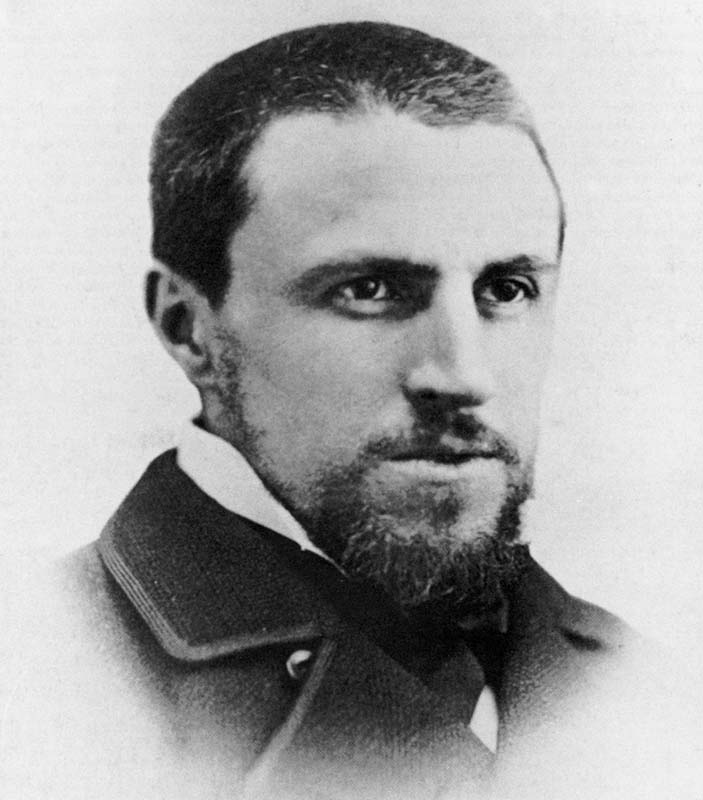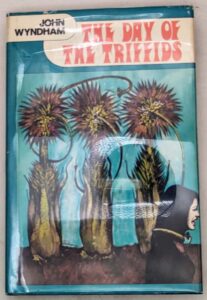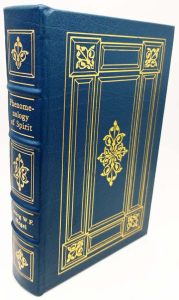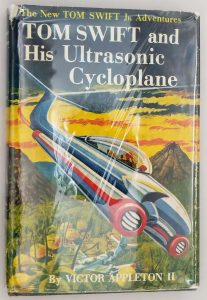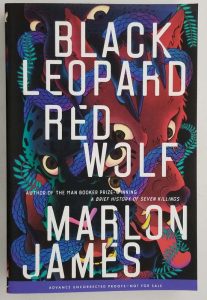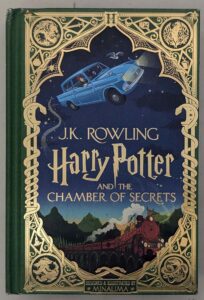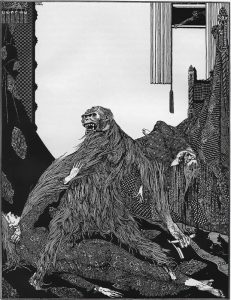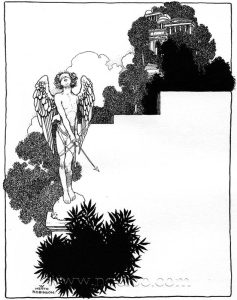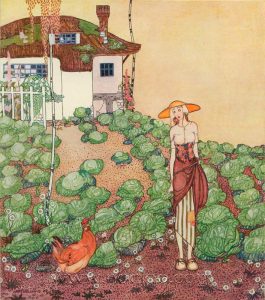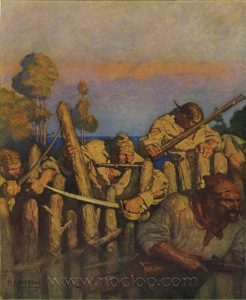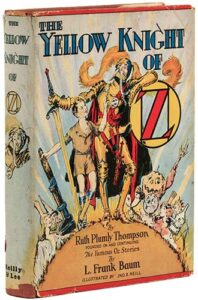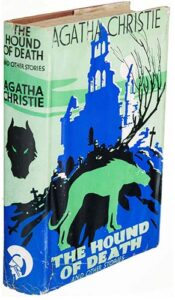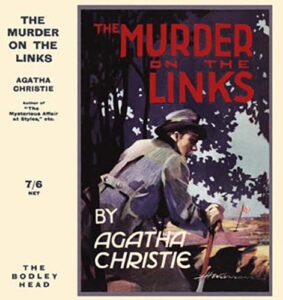Gustave Caillebotte - Garden - Private collection, oil on canvas (art, paintings)
Gustave Caillebotte - Lane Bordered by Trees - Private collection, oil on canvas (art, paintings)
Gustave Caillebotte - Petit Gennevilliers, Facade, Southeast of the Artist's Studio, Overlooking the Garden, Spring - Private collection, oil on canvas (art, paintings)
Gustave Caillebotte - Self Portrait (fragment) (also known as Self Portrait Wearing a Summer Hat) (art, paintings)
Gustave Caillebotte - Self-Portrait in the Park at Yerres - - Private collection, oil on canvas (art, paintings)
Gustave Caillebotte - Study for 'Les Dahlias, Jardin du Petit Gennevilliers' (art, paintings)
Gustave Caillebotte - The Pont de Europe (study) (also known as Port de'l Europe) - Kimbell Art Museum, oil on canvas (art, paintings)
Gustave Caillebotte - The Yerres, Effect of Light (art, paintings)
Gustave Caillebotte - Willow on the Banks of the Seine - Private collection, oil on canvas (art, paintings)
Gustave Caillebotte - Yerres, the Aviary in the Ornamental Farm (art, paintings)
Gustave Caillebotte - Yerres, the Lawn in the Park, Seen from a Path (art, paintings)
Gustave Caillebotte [1870] - Yerres, Colonnade of the Casin, Private collection, oil on canvas (art, paintings)
Gustave Caillebotte [1871-1878] - Garden Rose and Blue Forget-Me-Nots in a Vase, Private collection, oil on canvas (art, paintings)
Gustave Caillebotte [1871-1878] - Garlic Cloves and Knife on the Corner of a Table, Private collection, oil on canvas (art, paintings)
Gustave Caillebotte [1871-1878] - Meaux Effect of Sunlight on the Old Chapterhouse, Private collection, oil on canvas (art, paintings)
Gustave Caillebotte [1871-1878] - Peaches, Apples and Grapes on a Vine Leaf, Private collection, oil on canvas (art, paintings)
Gustave Caillebotte [1871-1878] - Peaches, Nectarines and Apricots, Private collection, oil on canvas (art, paintings)
Gustave Caillebotte [1871-1878] - The Briard Plain, Private collection, oil on canvas (art, paintings)
Gustave Caillebotte [1871-1878] - Yerres, Camille Daurelle under an Oak Tree, Private collection, oil on canvas (art, paintings)
Gustave Caillebotte [1871-1878] - Yerres, Close of the Abbesses, Private collection, oil on canvas (art, paintings)
Gustave Caillebotte [1871-1878] - Yerres, Dark Bay Horse in the Stable, Private collection, oil on canvas (art, paintings)
Gustave Caillebotte [1871-1878] - Yerres, on the Pond, Water Lilies, Private collection, oil on canvas (art, paintings)
Gustave Caillebotte [1871-1878] - Yerres, Part of the South Facade of the Casin, Private collection, oil on canvas (art, paintings)
Gustave Caillebotte [1871-1878] - Yerres, Path Through the Old Growth Woods in the Park, Private collection, oil on canvas (art, paintings)
Gustave Caillebotte [1871-1878] - Yerres, Path Through the Woods in the Park, Private collection, oil on canvas (art, paintings)
Gustave Caillebotte [1871-1878] - Yerres, Reddish Bay Horse in the Stable, Private collection, oil on canvas (art, paintings)
Gustave Caillebotte [1871-1878] - Yerres, Soldiers in the Woods, Private collection, oil on canvas (art, paintings)
Gustave Caillebotte [1871-1878] - Yerres, Through the Grove, the Ornamental Farm, Private collection, oil on canvas (art, paintings)
Gustave Caillebotte [1872-1874] - Interior of a Studio with Stove, Private collection, oil on canvas (art, paintings)
Gustave Caillebotte [1872] - A Road Near Naples (Une route a Naples), Private collection, oil on canvas (art, paintings)
Gustave Caillebotte [1872] - Landscape with Railway Tracks, Private collection, oil on canvas (art, paintings)
Gustave Caillebotte [1872] - Willows by the Yerres, Private collection, oil on canvas (art, paintings)
Gustave Caillebotte [1873] - Naked Woman Lying on a Couch (Femme Nue Etendue Sur Un Divan), Metropolitan Museum of Art (art, paintings)
Gustave Caillebotte [1873] - Woman at a Dressing Table, Private collection, oil on canvas (art, paintings)
Gustave Caillebotte [1874-1878] - Harvest, Landscape with Five Haystacks, Private collection, oil on canvas (art, paintings)
Gustave Caillebotte [1874-1878] - Loaded Haycart, Private collection, oil on canvas (art, paintings)
Gustave Caillebotte [1874-1879] - Yerres, Woods at la Grange, Path of the Great Ha-Ha, Private collection, oil on canvas (art, paintings)
Gustave Caillebotte [1874] - Horses in the Stable, Private collection, oil on canvas (art, paintings)
Gustave Caillebotte [1874] - Landscape with Haystacks, Private collection, oil on canvas (art, paintings)
Gustave Caillebotte [1874] - Woman Seated on the Grass (fragment), Private collection, oil on canvas (art, paintings)
Gustave Caillebotte [1874] - Woman Seated under a Tree, Private collection, oil on canvas (art, paintings)
Gustave Caillebotte [1875-1876] - Billiards (unfinished) (Le Billard), Private collection, oil on canvas (art, paintings)
Gustave Caillebotte [1875-1877] - The Gardeners, Private collection, oil on canvas (art, paintings)
Gustave Caillebotte [1875-1877] - The Kitchen Garden, Yerres, Private collection, oil on canvas (art, paintings)
Gustave Caillebotte [1875-1877] - The Wall of the Kitchen Garden, Yerres (art, paintings)
Gustave Caillebotte [1875] - A Young Man at His Window (Jeune Homme a sa fenetre) (art, paintings)
Gustave Caillebotte [1875] - L'Yerres, Private collection, oil on canvas (art, paintings)
Gustave Caillebotte [1875] - Landscape, Banks of the Yerres, Private collection, oil on canvas (art, paintings)
Gustave Caillebotte [1875] - The Floor Scrapers (Les Raboteurs de Parquet), Private collection, oil on canvas (art, paintings)
Gustave Caillebotte [1875] - The Floor Scrapers (study), Private collection, oil on canvas (art, paintings)
Gustave Caillebotte [1875] - The Floor Scrapers (study) (art, paintings)
Gustave Caillebotte [1875] - The Park on the Caillebotte Property at Yerres, Private collection, oil on canvas (art, paintings)
Gustave Caillebotte [1875] - The Yerres, Rain (L'Yerres, effet de Pluie), Indiana University Art Museum, oil on canvas (art, paintings)
Gustave Caillebotte [1876-1877] - Bridge of Europe (On the Pont de l'Europe), Kimbell Art Museum (art, paintings)
Gustave Caillebotte [1876-1877] - The Pont de Europe, Kimbell Art Museum, oil on canvas (art, paintings)
Gustave Caillebotte [1876] - Fishermen on the Banks of the Yerres, Private collection, oil on canvas (art, paintings)
Gustave Caillebotte [1876] - Garden at Yerres, Private collection, oil on canvas (art, paintings)
Gustave Caillebotte [1876] - Luncheon (Le Dejeuner), Private collection, oil on canvas (art, paintings)
Gustave Caillebotte [1876] - Portraits in the Countryside (Portraits a la Campagne), Musee Baron-Berard, oil on canvas (art, paintings)
Gustave Caillebotte [1876] - The Floor Scrapers, Private collection, oil on canvas (art, paintings)
Gustave Caillebotte [1876] - The Pont du Europe (Le Pont de L'Europe), Musee du Petit Palais, oil on canvas (art, paintings)
Gustave Caillebotte [1876] - Young Man Playing the Piano, Private collection, oil on canvas (art, paintings)
Gustave Caillebotte [1877- Le Nageur] - Musee d'Orsay - Drawing - pastel (art, paintings)
Gustave Caillebotte [1877- Painting] - oil on canvas - Skiffs (art, paintings)
Gustave Caillebotte [1877] - A Rainy Day (study) Paris Street,Musee Marmottan Monet, oil on canvas (art, paintings)
Gustave Caillebotte [1877] - Bathers, Banks of the Yerres (Baigneurs bord de l'Yerres), Musee des Beaux-Arts d'Agen - Drawing - pastel (art, paintings)
Gustave Caillebotte [1877] - Boaters on the Yerres, Private collection - Drawing - pastel (art, paintings)
Gustave Caillebotte [1877] - Boating Party, Private collection, oil on canvas (art, paintings)
Gustave Caillebotte [1877] - Camille Daurelle in the Park at Yerres, Private collection - Drawing - pastel (art, paintings)
Gustave Caillebotte [1877] - Landscape near Yerres (also known as View of the Yerres Valley and the Garden of the Artist's Family Property) - Private collection (art, paintings)
Gustave Caillebotte [1877] - Oarsmen (Canotiers ramant sur l'Yerres), Private collection, oil on canvas (art, paintings)
Gustave Caillebotte [1877] - Paris street, Rainy Day, Art Institute of Chicago, oil on canvas (art, paintings)
Gustave Caillebotte [1877] - Perissoires sur l'Yerres (also known as Boating on the Yerres) (art, paintings)
Gustave Caillebotte [1877] - Perissoires sur l'Yerres (art, paintings)
Gustave Caillebotte [1877] - Portrait of a Man, Private collection, oil on canvas (art, paintings)
Gustave Caillebotte [1877] - Portrait of a Young Woman in an Interior (also known as Portrait of Madame H), Private collection, oil on canvas (art, paintings)
Gustave Caillebotte [1877] - Portrait of Camille Daurelle, Private collection - Drawing - pastel (art, paintings)
Gustave Caillebotte [1877] - Portrait of Madame Boissiere Knitting, Museum of Fine Arts, Houston, oil on canvas (art, paintings)
Gustave Caillebotte [1877] - The Gardener, Private collection, oil on canvas (art, paintings)
Gustave Caillebotte [1877] - The House Painters (Les peintres en Batiment), Private collection, oil on canvas (art, paintings)
Gustave Caillebotte [1877] - The House Painters, Private collection, oil on canvas (art, paintings)
Gustave Caillebotte [1877] - The Kitchen Garden, Yerres, Private collection, oil on canvas (art, paintings)
Gustave Caillebotte [1877] - The Nap, Wadsworth Athaneum - Drawing - pastel (art, paintings)
Gustave Caillebotte [1877] - The Oarsmen, Private collection, oil on canvas (art, paintings)
Gustave Caillebotte [1877] - The Park at Yerres, Private collection, oil on canvas (art, paintings)
Gustave Caillebotte [1878] - Banks of the Yerres, Private collection, oil on canvas (art, paintings)
Gustave Caillebotte [1878] - Bather Preparing to Dive, Banks of the Yerres, Private collection, oil on canvas (art, paintings)
Gustave Caillebotte [1878] - Bathers, Private collection, oil on canvas (art, paintings)
Gustave Caillebotte [1878] - Boater Pulling on His Perissoire, Virginia Museum of Fine Arts, oil on canvas (art, paintings)
Gustave Caillebotte [1878] - Fishing, Private collection, oil on canvas (art, paintings)
Gustave Caillebotte [1878] - Les Orangers (art, paintings)
Gustave Caillebotte [1878] - Perissoires (also known as The Canoes), Musee des Beaux-Arts de Rennes, oil on canvas (art, paintings)
Gustave Caillebotte [1878] - Place Saint-Augustin, Misty Weather, Private collection, oil on canvas (art, paintings)
Gustave Caillebotte [1878] - Portrait de Madame X (art, paintings)
Gustave Caillebotte [1878] - Portrait of Madame X, Musee Fabre - Drawing - pastel (art, paintings)
Gustave Caillebotte [1878] - Portrait of Paul Hugot, Private collection, oil on canvas (art, paintings)
Gustave Caillebotte [1878] - Roof under the Snow, Paris, oil on canvas (art, paintings)
Gustave Caillebotte [1878] - Rooftops Under Snow, Private collection, oil on canvas (art, paintings)
Gustave Caillebotte [1878] - Rue Halevy, Balcony View, Private collection, oil on canvas (art, paintings)
Gustave Caillebotte [1878] - Rue Halevy, Seen from the Sixth Floor, Private collection, oil on canvas (art, paintings)
Gustave Caillebotte [1878] - The Garden, Private collection, oil on canvas (art, paintings)
Gustave Caillebotte [1878] - The Orange Trees, Museum of Fine Arts, Houston, oil on canvas (art, paintings)
Gustave Caillebotte [1878] - The Painter under His Parasol, Private collection, oil on canvas (art, paintings)
Gustave Caillebotte [1878] - The Parc Monceau, Private collection, oil on canvas (art, paintings)
Gustave Caillebotte [1878] - The Perpiniere Barracks, Private collection, oil on canvas (art, paintings)
Gustave Caillebotte [1879-1880] - Self Portrait with Easel, Private collection, oil on canvas (art, paintings)
Gustave Caillebotte [1879] - Portrait of a Schoolboy, Private collection, oil on canvas (art, paintings)
Gustave Caillebotte [1879] - Portrait of Jules Richemont, Private collection, oil on canvas (art, paintings)
Gustave Caillebotte [1879] - Still Life, Private collection, oil on canvas (art, paintings)
Gustave Caillebotte [1880-1881] - A Balcony in Paris, Private collection, oil on canvas (art, paintings)
Gustave Caillebotte [1880-1882] - Melon and Bowl of Figs, Private collection, oil on canvas (art, paintings)
Gustave Caillebotte [1880-1882] - Nu au divan (art, paintings)
Gustave Caillebotte [1880-1882] - Still Life with Crayfish, Private collection, oil on canvas (art, paintings)
Gustave Caillebotte [1880-1884] - Seascape, Regatta at Villers, Private collection, oil on canvas (art, paintings)
Gustave Caillebotte [1880] - In a Cafe, (Musee des Beaux-Arts, Rouen (France), oil on canvas (art, paintings)
Gustave Caillebotte [1880] - A Balcony, Private collection, oil on canvas (art, paintings)
Gustave Caillebotte [1880] - A Traffic Island, Boulevard Haussmann (Un refuge boulevard Haussmann), Private collection, oil on canvas (art, paintings)
Gustave Caillebotte [1880] - Boulevard des Italiens, Private collection, oil on canvas (art, paintings)
Gustave Caillebotte [1880] - Boulevard Haussmann, Snow, Private collection, oil on canvas (art, paintings)
Gustave Caillebotte [1880] - Boulevard Seen from Above, Private collection, oil on canvas (art, paintings)
Gustave Caillebotte [1880] - Cliff at Villers-sur-Mer, Private collection, oil on canvas (art, paintings)
Gustave Caillebotte [1880] - Game of Bezique (La Partie de Besigue), Private collection, oil on canvas (art, paintings)
Gustave Caillebotte [1880] - Interior (also known as View across the Balcony), Musee d'Orsay, oil on canvas (art, paintings)
Gustave Caillebotte [1880] - Interior, Private collection, oil on canvas (art, paintings)
Gustave Caillebotte [1880] - Le Boulevard vu d'en haut (art, paintings)
Gustave Caillebotte [1880] - Portrait of a Man, Private collection, oil on canvas (art, paintings)
Gustave Caillebotte [1880] - The Man on the Balcony (Homme au Balcon) (art, paintings)
Gustave Caillebotte [1880] - The Man on the Balcony, Private collection, oil on canvas (art, paintings)
Gustave Caillebotte [1880] - The Man on the Balcony (art, paintings)
Gustave Caillebotte [1880] - The Street of Mont-Cenis, Montmartre, Private collection, oil on canvas (art, paintings)
Gustave Caillebotte [1880] - Three Partridges on a Table, Private collection, oil on canvas (art, paintings)
Gustave Caillebotte [1880] - Villas at Villers-sur-Mer, Private collection, oil on canvas (art, paintings)
Gustave Caillebotte [1881- The Garden of Petit Gennevillers, the Pink Roofs, Private collection, oil on canvas (art, paintings)
Gustave Caillebotte [1881-1882] - Fruit Displayed on a Stand, Private collection, oil on canvas (art, paintings)
Gustave Caillebotte [1881-1882] - Hors d'Oeuvre, Private collection, oil on canvas (art, paintings)
Gustave Caillebotte [1881] - A Soldier, Private collection, oil on canvas (art, paintings)
Gustave Caillebotte [1881] - Rising Road, Private collection, oil on canvas (art, paintings)
Gustave Caillebotte [1881] - Still Life with Oysters (Nature morte aux huitres), Private collection, oil on canvas (art, paintings)
Gustave Caillebotte [1881] - The Piano Lesson, Musee Marmottan Monet, oil on canvas (art, paintings)
Gustave Caillebotte [1882-1886] - Field and Pont d'Argenteuil ,Private collection, oil on canvas (art, paintings)
Gustave Caillebotte [1882-1886] - The Lawn near the Bridge of Argenteuil (art, paintings)
Gustave Caillebotte [1882] - A Garden in Trouville, Private collection, oil on canvas (art, paintings)
Gustave Caillebotte [1882] - Calf in a Butcher Shop, Private collection, oil on canvas (art, paintings)
Gustave Caillebotte [1882] - Calf's Head and Ox Tongue, Private collection, oil on canvas (art, paintings)
Gustave Caillebotte [1882] - Display of Chickens and Game Birds, Private collection, oil on canvas (art, paintings)
Gustave Caillebotte [1882] - Hare, Private collection, oil on canvas (art, paintings)
Gustave Caillebotte [1882] - Kitchen Garden, Petit Gennevilliers, Private collection, oil on canvas (art, paintings)
Gustave Caillebotte [1882] - Mullet, Private collection, oil on canvas (art, paintings)
Gustave Caillebotte [1882] - Rib of Beef, Private collection, oil on canvas (art, paintings)
Gustave Caillebotte [1882] - Thatched Cottage at Trouville (La Chaumiere Trouville), Art Institute of Chicago, oil on canvas (art, paintings)
Gustave Caillebotte [1882] - Thatched Cottage at Trouville, Art Institute of Chicago, oil on canvas (art, paintings)
Gustave Caillebotte [1882] - The Artist's House at Petit Gennevilliers, Private collection, oil on canvas (art, paintings)
Gustave Caillebotte [1882] - The Bank and Bridge at Argenteuil, Private collection, oil on canvas (art, paintings)
Gustave Caillebotte [1882] - The Basin at Argenteuil, Private collection, oil on canvas (art, paintings)
Gustave Caillebotte [1882] - The Beach at Trouville, Private collection, oil on canvas (art, paintings)
Gustave Caillebotte [1882] - The Garden at Trouville 2, Private collection, oil on canvas (art, paintings)
Gustave Caillebotte [1882] - The Garden at Trouville, Private collection, oil on canvas (art, paintings)
Gustave Caillebotte [1882] - The Sea at Villerville, Private collection, oil on canvas (art, paintings)
Gustave Caillebotte [1882] - Two Hanging Pheasants, Private collection, oil on canvas (art, paintings)
Gustave Caillebotte [1882] - View of the Sea from Villerville (also known as sea scape), Private collection, oil on canvas (art, paintings)
Gustave Caillebotte [1882] - Woman Sitting on a Red-Flowered Sofa, Seattle Art Museum, oil on canvas (art, paintings)
Gustave Caillebotte [1882] - Yellow Roses in a Vase, Dallas Museum of Fine Arts, Dallas, Texas, USA, oil on canvas (art, paintings)
Gustave Caillebotte [1883] - La Promenade d'Argenteuil (art, paintings)
Gustave Caillebotte [1883] - Pheasants and Woodcocks on a Marble Table, Museum of Fine Arts, Springfield, oil on canvas (art, paintings)
Gustave Caillebotte [1883] - Portrait of Henri Cordier, Musee d'Orsay, oil on canvas (art, paintings)
Gustave Caillebotte [1883] - Promenade at Argenteuil, Private collection, oil on canvas (art, paintings)
Gustave Caillebotte [1883] - Still LIfe with a Vase of Lilacs, Private collection, oil on canvas (art, paintings)
Gustave Caillebotte [1883] - The Argenteuil Bridge on the Seine, Private collection, oil on canvas (art, paintings)
Gustave Caillebotte [1883] - The Plain at Gennevilliers, Group of Poplars, Private collection, oil on canvas (art, paintings)
Gustave Caillebotte [1883] - The Promenade at Argenteuil, Private collection, oil on canvas (art, paintings)
Gustave Caillebotte [1883] - The Walk at Argenteuil (art, paintings)
Gustave Caillebotte [1883] - Verger aux Pommiers en Fleurs, Colombes (art, paintings)
Gustave Caillebotte [1884] - - Landscape - Study in Yellow and Rose Private collection, oil on canvas (art, paintings)
Gustave Caillebotte [1884] - - Man at His Bath, National Gallery, London, oil on canvas (art, paintings)
Gustave Caillebotte [1884] - By the sea at Normandy, Private collection, oil on canvas (art, paintings)
Gustave Caillebotte [1884] - By the sea at Trouville, oil on canvas (art, paintings)
Gustave Caillebotte [1884] - Entrance to the garden at Petit Gennevilliers, Private collection, oil on canvas (art, paintings)
Gustave Caillebotte [1884] - Fields, Plaine de Gennevilliers, Study in Yellow and Green, Private collection, oil on canvas (art, paintings)
Gustave Caillebotte [1884] - Flower Bed, Private collection, oil on canvas (art, paintings)
Gustave Caillebotte [1884] - Le Pere Magloire allonge dans un bois ou Claude Monnet faisant la sieste (art, paintings)
Gustave Caillebotte [1884] - Man in a Smock (also known as Father Magloire on the Road between Saint-Clair and Etretat), Private collection, oil on canvas (art, paintings)
Gustave Caillebotte [1884] - Norman Landscape, Private collection, oil on canvas (art, paintings)
Gustave Caillebotte [1884] - Pink Villas at Trouville, oil on canvas (art, paintings)
Gustave Caillebotte [1884] - Regates en mer, a Villerville (art, paintings)
Gustave Caillebotte [1884] - Richard Gallo and His Dog at Petit Gennevilliers, Private collection, oil on canvas (art, paintings)
Gustave Caillebotte [1884] - Rose Bush in Flower, Private collection, oil on canvas (art, paintings)
Gustave Caillebotte [1884] - The Flower Garden (art, paintings)
Gustave Caillebotte [1884] - The Plain of Gennevilliers, Etude in Yellow and Green, Private collection, oil on canvas (art, paintings)
Gustave Caillebotte [1884] - The Yellow Fields at Gennevilliers 2, Wallraf-Richartz-Museum, oil on canvas (art, paintings)
Gustave Caillebotte [1884] - Villas at Trouville 1, Private collection, oil on canvas (art, paintings)
Gustave Caillebotte [1884] - Villas at Trouville 3, Private collection, oil on canvas (art, paintings)
Gustave Caillebotte [1884] - Vue de Paris, effet de soleil nd (art, paintings)
Gustave Caillebotte [1884] - Woman with a Rose, Private collection, oil on canvas (art, paintings)
Gustave Caillebotte [1885-1887] - The Seine and the Railroad Bridge at Argenteuil (art, paintings)
Gustave Caillebotte [1885] - Portrait de Maurice Hugot, enfant (art, paintings)
Gustave Caillebotte [1885] - Portrait of a Man Writing in His Study, Private collection, oil on canvas (art, paintings)
Gustave Caillebotte [1885] - Portrait of Jean Daurelle, Private collection, oil on canvas (art, paintings)
Gustave Caillebotte [1885] - Portrait of Jules Dubois, Private collection, oil on canvas (art, paintings)
Gustave Caillebotte [1885] - Sunflowers, Garden at Petit Gennevilliers, Private collection, oil on canvas (art, paintings)
Gustave Caillebotte [1885] - Vers Le Chien Paul (art, paintings)
Gustave Caillebotte [1886-1887] - Boathouse in Argenteuil, Private collection, oil on canvas (art, paintings)
Gustave Caillebotte [1886] - Paris sous la neige (art, paintings)
Gustave Caillebotte [1886] - Roses, Garden at Petit Gennevilliers, Private collection, oil on canvas (art, paintings)
Gustave Caillebotte [1886] - Sunflowers on the Banks of the Seine, Private collection, oil on canvas (art, paintings)
Gustave Caillebotte [1887-1888] - Winter Landscape, Private collection, oil on canvas (art, paintings)
Gustave Caillebotte [1887] - Vase of Gladiolas, Private collection, oil on canvas (art, paintings)
Gustave Caillebotte [1888-1889] - Self Portrait, Private collection, oil on canvas (art, paintings)
Gustave Caillebotte [1888-1894] - by the Sea, Private collection, oil on canvas (art, paintings)
Gustave Caillebotte [1888] - Anchored Boat on the Seine at Argenteuil, Private collection, oil on canvas (art, paintings)
Gustave Caillebotte [1888] - Boats at Trouville, Private collection, oil on canvas (art, paintings)
Gustave Caillebotte [1888] - Bust Portrait of Eugene Lamy, Private collection, oil on canvas (art, paintings)
Gustave Caillebotte [1888] - Factories in Argenteuil (art, paintings)
Gustave Caillebotte [1888] - La Plaine de Gennevilliers, oil on canvas (art, paintings)
Gustave Caillebotte [1888] - Park in the Snow, Paris, Private collection, oil on canvas (art, paintings)
Gustave Caillebotte [1888] - Portrait of Eugene Lamy (art, paintings)
Gustave Caillebotte [1888] - Portrait of Madame Renoir, Private collection, oil on canvas (art, paintings)
Gustave Caillebotte [1888] - Sailboats in Argenteuil (Voiliers a Argenteuil), Musee d'Orsay, oil on canvas (art, paintings)
Gustave Caillebotte [1888] - Sailboats in Argenteuil, Musee d'Orsay, oil on canvas (art, paintings)
Gustave Caillebotte [1888] - The Gennevilliers Plain, Seen from the Slopes of Argenteuil, Private collection, oil on canvas (art, paintings)
Gustave Caillebotte [1888] - The Petit Bras of the Seine, Private collection, oil on canvas (art, paintings)
Gustave Caillebotte [1888] - The Seine at the Place of Epinay (art, paintings)
Gustave Caillebotte [1888] - vers La Seine a la Pointe d'Epenay (art, paintings)
Gustave Caillebotte [1888] - View of the Sea at Trouville, Private collection, oil on canvas (art, paintings)
Gustave Caillebotte [1888] - Villas at Trouville 2, Private collection, oil on canvas (art, paintings)
Gustave Caillebotte [1889] - Landscape at Argenteuil, Private collection, oil on canvas (art, paintings)
Gustave Caillebotte [1889] - Portrait of Eugene Lamy, Private collection, oil on canvas (art, paintings)
Gustave Caillebotte [1890-1891] - Boat at Anchor on the Seine, Private collection, oil on canvas (art, paintings)
Gustave Caillebotte [1890-1891] - Garden Path with Dahlias in Petit Gennevilliers (art, paintings)
Gustave Caillebotte [1890-1891] - Sailing Boats on the Seine at Argenteuil, Private collection, oil on canvas (art, paintings)
Gustave Caillebotte [1890] - Boats on the Seine at Argenteuil, Private collection, oil on canvas (art, paintings)
Gustave Caillebotte [1890] - The Bank of the River Seine at Petit Genevilliers (art, paintings)
Gustave Caillebotte [1891] - Anonyme Gustave Caillebotte et son chien Photographie Portrait (art, paintings)
Gustave Caillebotte [1891] - The Yellow Boat (art, paintings)
Gustave Caillebotte [1892] - Nasturtiums 2, Private collection, oil on canvas (art, paintings)
Gustave Caillebotte [1892] - Bord de la Seine au Petit-Gennevilliers (art, paintings)
Gustave Caillebotte [1892] - Laundry Drying, Petit Gennevilliers, Private collection, oil on canvas (art, paintings)
Gustave Caillebotte [1892] - Laundry Drying, Wallraf-Richartz-Museum, oil on canvas (art, paintings)
Gustave Caillebotte [1892] - Nasturtiums, Private collection, oil on canvas (art, paintings)
Gustave Caillebotte [1892] - Rose with Purple Iris, Garden at Petit Gennevilliers, Private collection, oil on canvas (art, paintings)
Gustave Caillebotte [1892] - Sailboats on the Seine at Argenteuil, Private collection, oil on canvas (art, paintings)
Gustave Caillebotte [1892] - Self Portrait (art, paintings)
Gustave Caillebotte [1892] - View of the Seine in the Direction of the Pont de Bezons, Private collection, oil on canvas (art, paintings)
Gustave Caillebotte [1893] - Champs jaunes a Gennevilliers (art, paintings)
Gustave Caillebotte [1893] - Chrysanthemes blancs et jaunes, jardin du Petit-Gennevilliers (art, paintings)
Gustave Caillebotte [1893] - Chrysanthemums in a Vase, Private collection, oil on canvas (art, paintings)
Gustave Caillebotte [1893] - Chrysanthemums, Garden at Petit Gennevilliers, Private collection, oil on canvas (art, paintings)
Gustave Caillebotte [1893] - Dahlias, The Garden at Petit Gennevilliers (Les Dahlias, jardin du Petit-Gennevilliers), Private collection, oil on canvas (art, paintings)
Gustave Caillebotte [1893] - Four Vases of Chrysanthemums, Private collection, oil on canvas (art, paintings)
Gustave Caillebotte [1893] - Orchids, Private collection, oil on canvas (art, paintings)
Gustave Caillebotte [1893] - Regatta at Argenteuil, Private collection, oil on canvas (art, paintings)
Gustave Caillebotte [1893] - The Argenteuil Bridge, Private collection, oil on canvas (art, paintings)
Gustave Caillebotte [1893] - The Bridge at Argenteuil, Private collection, oil on canvas (art, paintings)
Gustave Caillebotte [1893] - White and Yellow Chrysanthemums, Garden at Petit Gennevilliers, Musee Marmottan Monet, oil on canvas (art, paintings)
Gustave Caillebotte [1894] - The Garden at Petit Gennevilliers in Winter, Private collection, oil on canvas (art, paintings)
